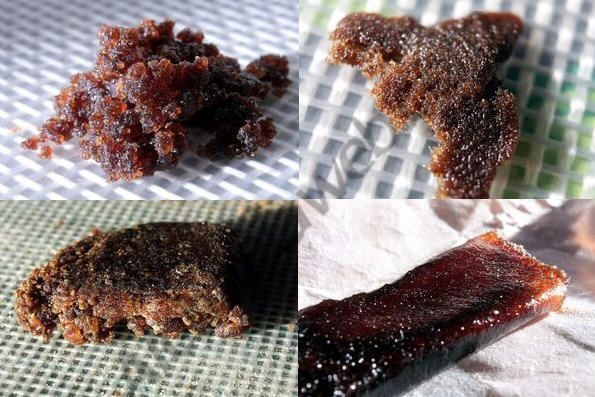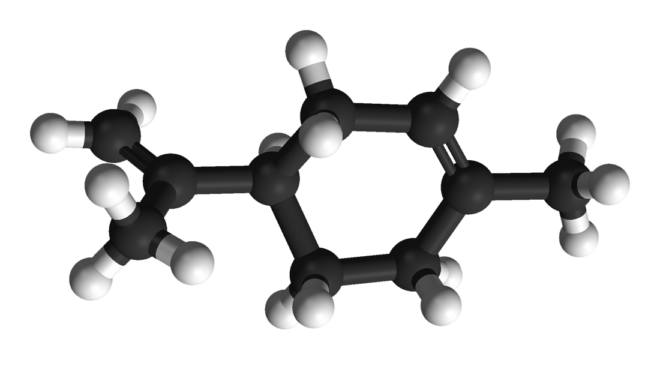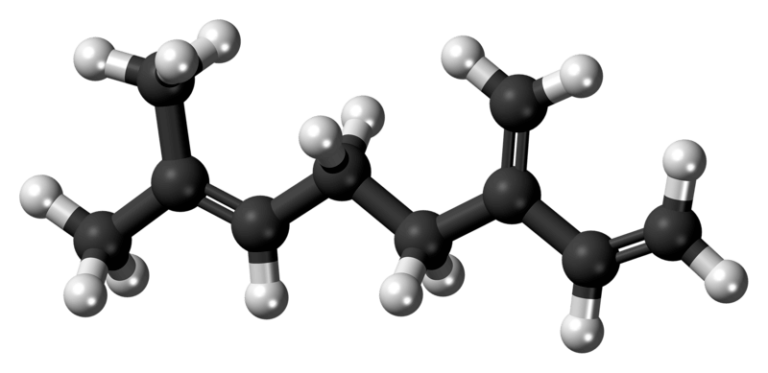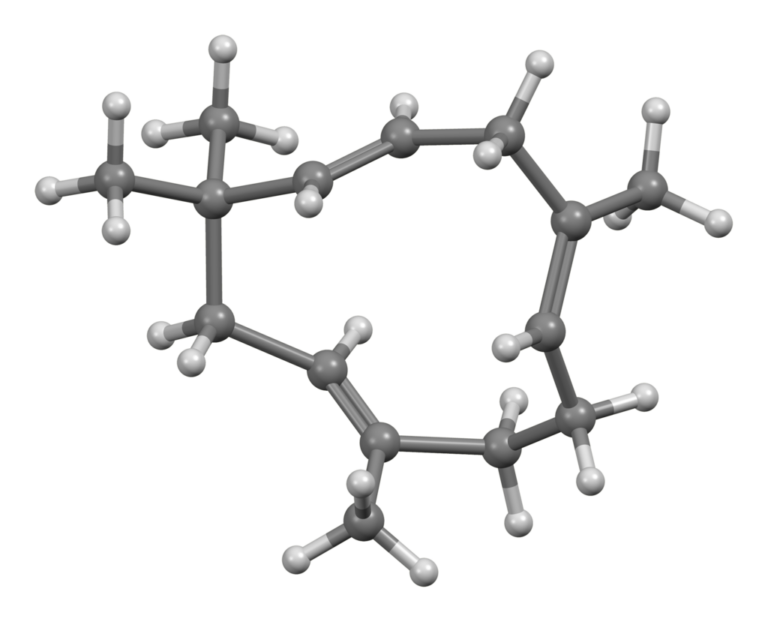Pinene: A terpene that can improve your memory
List of contents
What is Pinene?
- Name: Pinene, alpha-pinene, beta-pinene
- Formula: C10 H16
- IUPAC name: (1S,5S)-2,6,6-trimethylbicyclo[3.1.1]hept-2-ene
- Molar mass: 136.24 g/mol
- Boiling point: 155-156ºC
- Appearance at room temperature: Liquid, almost insoluble in water
Pinene is a bicyclic monoterpene widely found in the resin of many plant species, from conifers (pine trees, spruces) to non-conifer plants like wormwood, rosemary, sage, heterotheca or cannabis. Two isomers are found in Nature, called alpha-pinene (?-pinene) and beta-pinene (?-pinene), which can be found in substances like pine resin, turpentine or camphene and are also used by many insects to communicate. Pinene is also a common terpene in a large number of cannabis strains, being highly appreciated by many users for its beneficial properties.
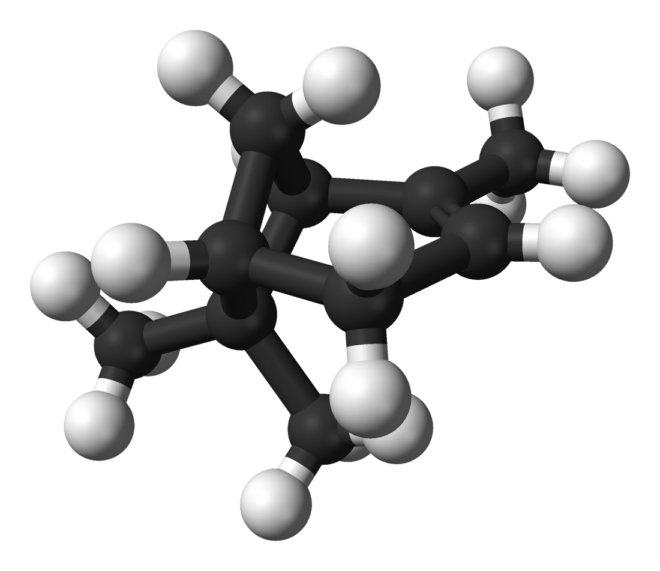
Indeed, many cannabis varieties contain considerable amounts of pinene in their trichomes, a terpene that - as we'll se next - has numerous therapeutic properties (especially the ?-pinene isomer). Furthermore, pinene is also widely used in the industry (selective catalytic oxidation of pinene produces compounds used to make cosmetics and fragances), while the beta isomer is used to synthesize myrcene, one of the most popular terpenes.
Synthesis of pinene
If we take into account the vast number of plant species containing pinene, we can state that it is doubtless one of the most abundant terpenes in Nature. Both the alpha (more abundant) and the beta isomers are produced from geranyl pyrophosphate via cyclisation of linalool, another terpene normally found in cannabis. Moreover, researchers from the JBEI (Joint BioEnergy Institute) have recently synthesized pinene from a bacteria.
As happens with limonene, it is believed that pinene greatly helps the plants to combat attacks from insects. Indeed, the intense smell of pinene (especially alpha-pinene) seems to be a very effective insect repellent. As we already commented, beta-pinene is often used to produce another major terpene, myrcene, which is in turn precursor of a compound called hashishene.

Smell and taste of pinene
The organoleptic properties of pinene mainly depend on the chosen isomer, with notable variations from one to another. The scent and taste of alpha-pinene is reminiscent of pine resin and rosemary, while the smell of beta isomer reminds of dill, parsley, basil and hops.
Properties and effects of pinene
Being pinene one of the most abundant terpenes, present in the resin, stems and leaves of many plants, it is not strange that it is also one of the most widely studied compounds by the scientific community. Either in the perfume or the pharma industry, humans have benefited from the multiple properties of pinene for centuries. Actually, it has been studied as biodiesel for spark ignition engines.
The medicinal properties of alpha-pinene were already used in ancient Chinese medicine, particularly to treat cancer (a Chinese study conducted in 2015 points at the same direction). Indeed, laboratory tests have demosntrated a 40% reduction in melanoma on mice when they're exposed to an environment rich in pinene, something that should be further studied. Moreover, its properties as bronchodilator and expectorant are well known, and its dilating action may be useful for patients with asthma or other respiratory conditions.
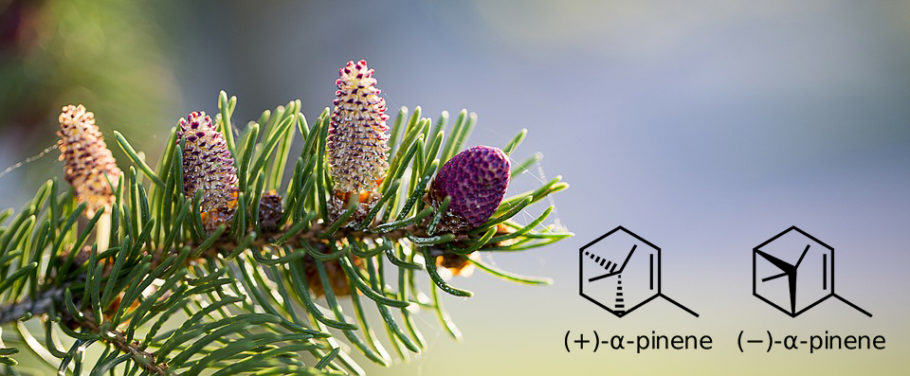
Alpha-pinene has also anti-inflammatory (via prostaglandin or PGE1) and antiseptic properties, being considered a broad-spectrum antibiotic. We have studies that demonstrate its effectiveness for treating viral bronchitis, being a useful tool against infectious viruses. It also plays a major role in the so-called entourage effect, reducing adverse effects of THC like anxiety, paranoia or short-term memory loss. It has been demonstrated that a strain with high THC and low pinene content can damage your memory more than a plant with high pinene content. This type of association can also be obserbed in strains with high CBD content: the effects of THC are modulated and reduced.
This fact is explained by the capacity of pinene of penetrating the hemato-cephalic barrier, where it acts as inhibitor of acetylcholynesterase: this results in extra protection for the molecules transmitting information, so one feels more lucid, with better memory and attention span.
Cannabis strains rich in pinene
Since it is one of the most widely found terpenes in cannabis, there is a large number of marijuana strains with considerable amounts of this useful and interesting terpene. We highlight the following ones for their proven quality:
- Jack Herer by Sensi Seeds
- OG Kush genetics
- Romulan by Next Generation Seeds
- Bubba Kush by Dinafem
- Island Sweet Skunk by Next Generation Seeds
- Trainwreck by Green House Seeds
- Strawberry Cough by Dutch Passion
- Blue Dream by Humboldt Seeds
- Chem D by Apothecary Genetics
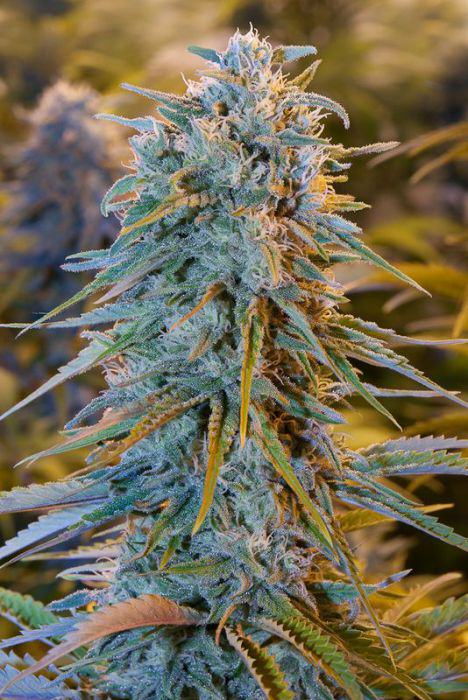
As you can see, there are plenty of strains with high pinene content, which is not only one of the most abundant compounds in Nature, but also in cannabis. We hope you found this article interesting, do not hesitate to leave here your doubts or comments. We'll be pleased to reply them!
Best!
Publications and studies about pinene consulted for the writing of this article:
- Anti-tumor effect of ?-pinene on human hepatoma cell lines through inducing G2/M cell cycle arrest. Weiqiang Chena, Ying Liu, Ming Li, Jianwen Mao, Lirong Zhang, Rongbo Huang, Xiaobao Jin, Lianbao Ye
- Evolution of the Cannabinoid and Terpene Content during the Growth of Cannabis sativa Plants from Different Chemotypes. Aizpurua-Olaizola, Oier; Soydaner, Umut; Öztürk, Ekin; Schibano, Daniele; Simsir, Yilmaz; Navarro, Patricia; Etxebarria, Nestor; Usobiaga, Aresatz
- Taming THC: potential cannabis synergy and phytocannabinoid-terpenoid entourage effects. Ethan B. Russo
- Upper airway and pulmonary effects of oxidation products of (+)-alpha-pinene, d-limonene, and isoprene in BALB/c mice. Rohr AC, Wilkins CK, Clausen PA, Hammer M, Nielsen GD, Wolkoff P, Spengler JD
- Comparative anti-infectious bronchitis virus (IBV) activity of (-)-pinene: effect on nucleocapsid (N) protein. Yang Z, Wu N, Zu Y, Fu Y
- Microbial Synthesis of Pinene. Stephen Sarria, Betty Wong, Hector García Martín, Jay D. Keasling, Pamela Peralta-Yahya














































